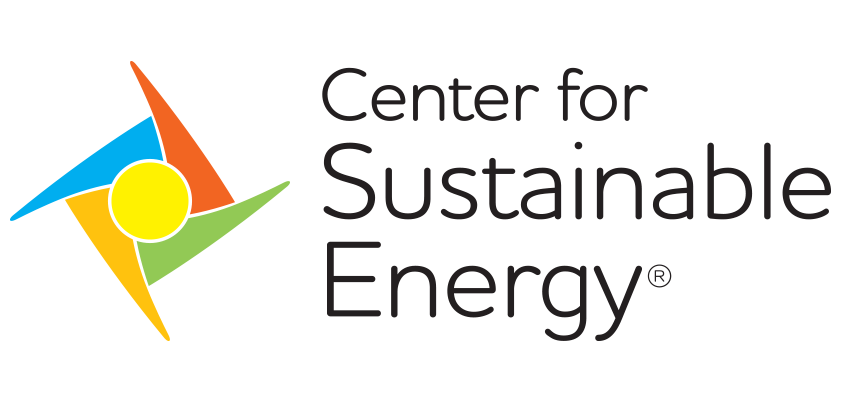Where Clean Transportation and Distributed Energy Are Headed in 2023

And how to get there faster
A new year is a fitting time to look ahead and make predictions. From our vantage point as a nonprofit that administers clean transportation and distributed energy programs across the U.S., we see hopeful signs. Policymakers, businesses and individuals are picking up the pace in the journey toward a more sustainable and equitable energy future.
Here are a few things we expect to see in 2023.
1. Electric vehicles move into the mainstream
Electric vehicles (EVs) will be seen on more roads across the nation. Major automakers are rolling out more EV offerings, including Americans’ favorite vehicle types – SUVs and pickup trucks. In California, EVs approached one out of every five new cars purchased last year. Florida, Texas, New York and Washington round out the top five states for EV sales. But the road ahead is still steep. Of the 2.9 trillion vehicle miles driven in 2021, fewer than 1% were in an EV, according to the U.S. Department of Energy.
What can speed up this transition
- Increase incentives. Robust, targeted rebates, especially for low- to moderate-income car shoppers, can help overcome the financial barriers to EV ownership. California, Massachusetts, New Jersey and others have recently increased rebate amounts or will soon do so. Rebates for used EVs, scrap-and-replace programs and e-bikes are even more likely to spur the adoption of electrified transportation.
- Educate sales staff. Auto dealership staff will need information on more than the car itself to get shoppers into their first EV. Shoppers will look to them for advice on how to get home charging installed, where to find public charging, and how much it costs. To fill the knowledge gap, the National Automobile Dealers Association has partnered with the Center for Sustainable Energy (CSE) and others to launch an online program this year to enhance dealership EV education.
- Expand EV charging. While the vast majority of EV charging now takes place at home, more EVs will require more publicly available chargers along highways and at workplaces, shopping centers and apartment complexes. And more will be coming…
2. EV charging becomes more widespread
The Bipartisan Infrastructure Law passed by Congress in 2022 included $7.5 billion for EV charging infrastructure. State National EV Infrastructure (NEVI) plans have been approved. (Read how we helped Louisiana develop its plan.) The next step is to put that funding to work – efficiently, effectively and equitably – to get chargers installed and activated.
How to focus EV infrastructure efforts
- Advance equity. We advocate a two-pronged approach to EV infrastructure planning: engage low-income and disadvantaged communities throughout the process and base decisions on data. CSE is using its Caret EV Infrastructure Planner to work with community-based organizations in California to recommend charger sites that will meet community-identified needs. The newest California Electric Vehicle Infrastructure Project launching in January 2023 will be exclusively for fast chargers in low-income and disadvantaged communities in 30 counties.
- Address multi-unit housing. Nearly a third of U.S. housing is multi-unit. Through the Vehicle Charging Innovations for Multi-Unit Dwellings project, CSE has created a toolkit with resources and guidance for property owners and managers, residents, utilities and local agencies to overcome barriers to EV charger installation, such as limited space, high cost and stakeholder complexities.
- Get workplace buy-in. While many EV drivers can charge overnight at home, others rely on public or workplace charging. This year, the U.S. Department of Energy-funded EMPOWER project will launch resources to foster development of more workplace charging. CSE is participating by leveraging our experience managing data for EV charging incentive programs.
3. More new construction will be electric-only
Some states and cities already require that new construction be electric-only – no gas furnaces, stoves, dryers or hot water heaters. In 2023, we expect more local and state governments to adopt this strategy to reduce carbon emissions, supported by $9 billion from the Inflation Reduction Act.
Work needed to increase electrification
- Increase consumer awareness. Using fossil fuels like gas, oil, and propane to cook food and heat water and space is not only bad for the environment but can also be bad for human health. Recent research has revealed that natural gas stoves release methane even while off, and release nitrogen dioxide linked to childhood asthma. More outreach is needed to ensure consumers know the environmental, economic and health benefits of home electrification.
- Engage contractors. Contractors are trusted by homeowners for information about installing or replacing furnaces or hot water heaters. We need to ensure contractors have the training they need and equip them with accurate, easy-to-understand information about the benefits of electric over gas to share with their customers.
- Integrate with the grid thoughtfully. More all-electric homes will increase demand for electricity, but this new load can be managed. Funding energy efficiency efforts is a first step. The next is to create programs that encourage using technologies to optimally time the storage and use of electricity. And that brings us to our last point.
4. Efforts evolve to promote converged solutions
Less of a prediction than a recommendation, we’d like to not only accelerate adoption of individual technologies but also focus on the ways clean technologies can support each other. Electricity for homes and vehicles can come from clean sources and be timed for when those clean sources are most available. EVs and energy storage batteries can actually build grid resilience by charging from wind and solar during the day and sending energy back to the grid during evening hours when home electricity usage is highest. Programs and policies can support converged solutions.
Ways to promote converged solutions
- Bundle incentives. We envision incentivizes for EV adoption connected to programs that help homeowners install EV charging and then to programs that encourage rooftop solar and energy storage. Some utility and government programs allow “incentive bundling,” but the burden is usually on the consumer to find and apply to each program one at a time.
- Align definitions and requirements. While programs should reflect unique, diverse circumstances and objectives, more effort is needed to harmonize programs intended to encourage the adoption of clean technologies. Ideally, programs would provide consistent requirements for income eligibility, technologies and other key parameters.
- Share data. Enabling clean energy and transportation programs to coordinate and share research data would be a major step toward identifying challenges in adoption within and among programs. For example, are storage incentives right-sized to accommodate EV charging loads while reducing peak demand, or are potential applicants staying out of the market because of the costs?
Solutions exist for a more sustainable future
We’re not seeking to jump ahead of what’s possible. We simply want to get more people to adopt more quickly the clean, sustainable solutions already here now by improving programs and policies that move the market forward. Keeping up, and speeding up, our momentum requires continued focus and effort.
We’re ready for the new year. Follow our progress by signing up for our Energy Loop newsletter.

